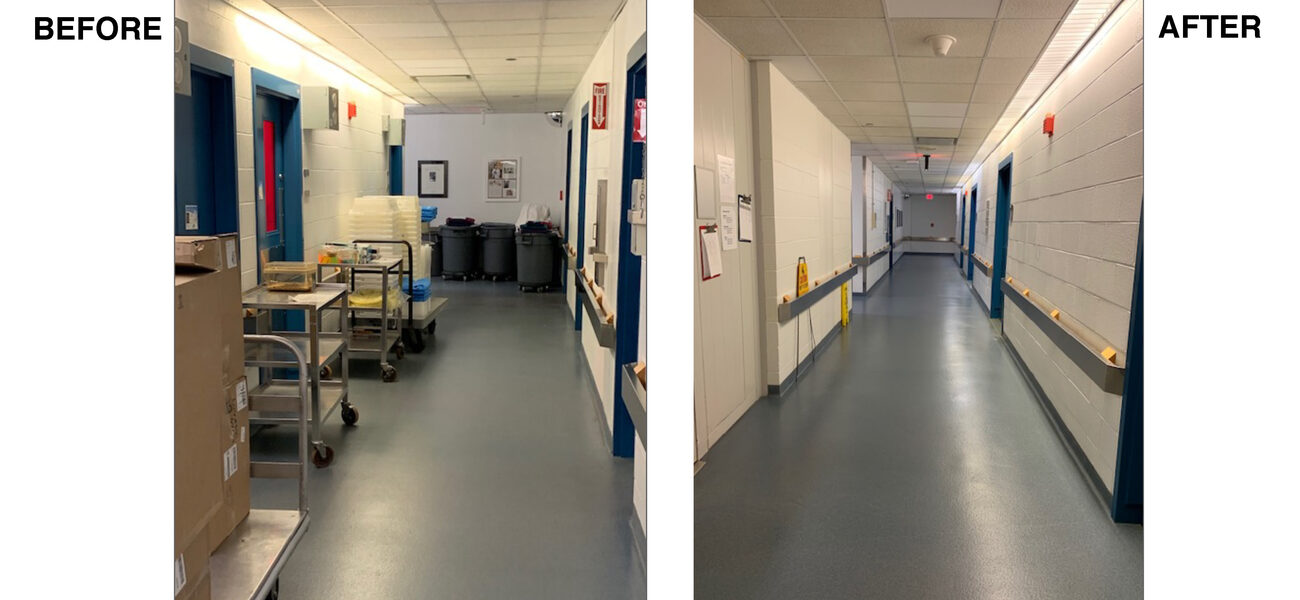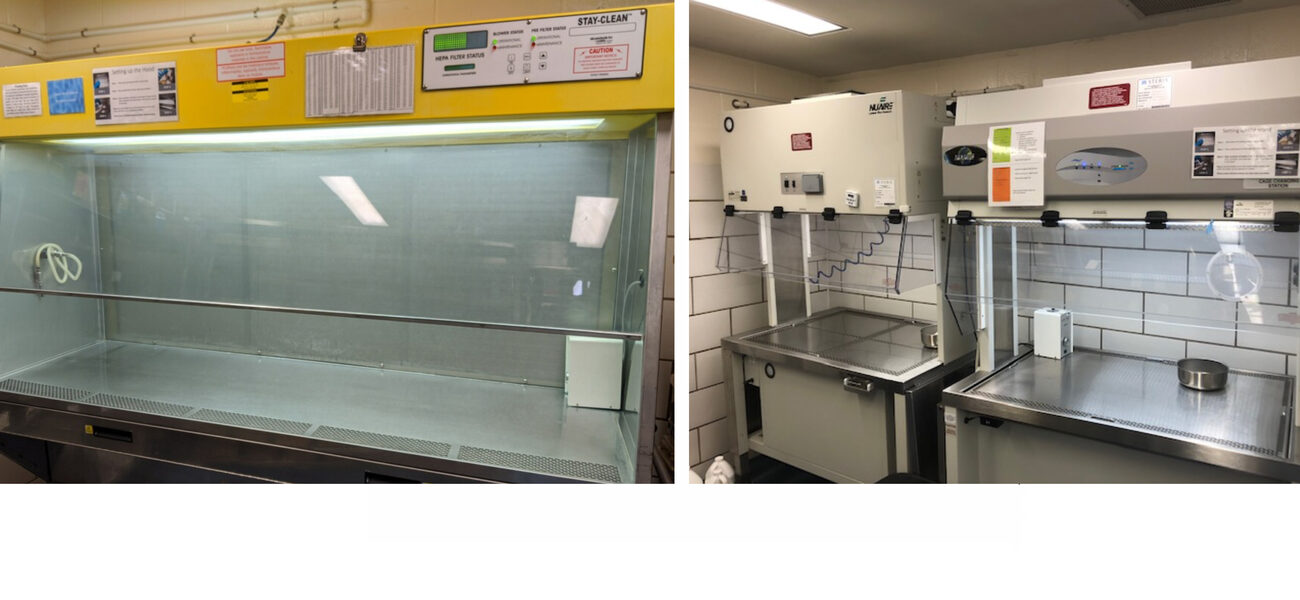Roughly a year and a half into a major Lean initiative, the vivarium at Cincinnati Children’s Hospital Medical Center has reduced its operating budget by at least 25 percent, cut overtime by more than 60 percent, and closed a 15,000-sf satellite, moving all employees into the original facility. Still a work in progress, the streamlining effort is applying a blend of Lean concepts and holistic, out-of-the-box thinking, with careful attention to both the hard and soft side of operations. Among the efficiencies instituted are a revamped cagewash schedule, staff trained in basic colony management, and the redesign of animal holding rooms so that PIs and husbandry personnel can comfortably work in the same space simultaneously.
“We have just about 100,000 sf of space for our vivarium. Our operating budget of $95 per sf was way too high. The national benchmark for that is less than a third,” says Kristine Justus, Ph.D., vice president of Cincinnati Children’s Research Foundation and associate director of Research Operations. “And the morale of our vivarium staff was far too low. Something had to give.”
“Our Lean implementation was perhaps different from most,” adds Sai Tummala, DVM, DACLAM, who was recruited in July 2018 to spearhead the initiative as director of Veterinary Services and attending veterinarian at the facility. “Cost was just one data point. We realized we didn’t have enough consistent quality metrics for many processes, which created inefficiencies. We had a 30 percent annual turnover in vivarium staff. That isn’t a recipe for a high-functioning facility.”
Tummala describes his approach as “whole-some,” looking at the big picture but also drilling down into individual tasks and who performs them, along with exploring physical and time constraints and stakeholder needs. Still, the focus falls on people, “an organization’s greatest asset. You have to spend time planning to navigate the culture change, working with people to get buy-in.”
It’s also important not to get married to a single Lean concept, he emphasizes. “Try to start changing just one process at a time, and then it will snowball organically.”
Cagewash Workflow
The cagewash workflow was one of the first areas to come under scrutiny. In order to operate efficiently, the line of cagewashing equipment needs to be fed with a steady stream of dirty cages. This wasn’t happening. Tummala found that, as in many animal facilities, there was no set schedule to transfer the dirty cages to the wash area. Technicians often waited until they had changed an entire room before sending back a huge batch of dirty cages. The random arrivals created a late-in-the-day buildup that was essentially never cleared, and the same cycle was repeated the next day. The extra cages purchased to compensate for the backlog not only incurred additional expense but also generated excess inventory that had to be stored in the corridors.
The new process has dirty cages arriving at the cagewash at roughly one-hour intervals.
“The technician comes into a holding room and changes as many cages as possible in an hour,” explains Tummala. The dirty cages—typically in batches of 40, the average productivity rate—are then pushed out to the cagewash, and the technician goes back to cage changing until turning over the allotted daily number of cages.
The new schedule removes the constraints posed by the bottlenecks among the various pieces of washing equipment and produces the desired continuous flow.
Tummala notes that the introduction of the new plan had to be well thought out and carefully presented to employees.
“When you are starting to implement this, people feel like they are being micromanaged,” he says. “Addressing this is part of the change management process.”
Hood Needs
Even on a regularized schedule, cage changing presented another pain point, this one involving a different set of customers: the PIs and their research associates, post-docs, and students. As part of the shift to more closely controlled operations, Tummala and his team surveyed the researchers to gain more insight into their needs. The results highlighted the importance of free access to the holding rooms, regardless of the time of day.
“They might need to collect data or perform a procedure, or perhaps they are running an experiment where they need to collect blood at an exact time,” he explains.
Given the population of specific pathogen-free rodents, all animal handling must take place in a clean environment, provided by the single large hood in the holding room. This made hood space “the most valuable commodity researchers are looking for when they come into the room.”
Bottlenecks could occur when the hood was in use by a technician engaged in cage changing.
“We had been living with that battle for a long time,” says Tummala. The solution called for “thinking creatively,” ultimately leading to the replacement of the existing, and aging, 6-foot hoods in the 8- to 10-foot space with updated, more compact models.
“At 4 to 5 feet each, I can put two hoods in the room, one dedicated to researchers for use at any time, and the other one for husbandry. When it’s not occupied, it can be used by the researchers. This is one way we are trying to solve the constraint.”
Increasing Cage Density
Other issues surfaced in conjunction with efforts to increase cage density in the holding rooms. On his arrival, Tummala found that at least 20 to 30 percent of rack space was unutilized. Researchers tended to feel a sense of ownership for their racks, reserving unoccupied units for future expansion of their colonies, which often failed to materialize.
The remedy to this inefficiency entailed both physical and cultural change. Consolidating rack space per researcher would allow additional PIs to use the holding room and thus increase cage density.
Gaining researcher buy-in to the change took time and a lot of face-to-face communication.
“If you want to consolidate the rack space, you need to work hand-in-hand with your PIs,” he says. “We held lab meetings to introduce the change. Of course, you may not be able to win over all of them, but you can present a convincing case.”
Ultimately, the vivarium developed a new guideline to encourage efficient rack use. “We said that if the rack was empty for three to four weeks, it was fair game for a new user.”
Redesigned Procedure Rooms
A consequence of cage consolidation was an increase in users in each holding room, creating a corresponding rise in the demand for hood space.
“I used to have 200 cages in a room,” says Tummala. “Now I have 500, from three more PIs. We have to factor in an average of three people per research lab who need vivarium access. The hood space condition becomes exponentially high. We need to plan for that, not only solving the space problem but the personnel workflow problems.”
He and his team came up with a few ways to mitigate the impact of the increased traffic. One was to move some routine procedures out of the holding room. That gave rise to the question of whether there was sufficient procedure space to accommodate the shift, which in turn triggered a redesign of the existing procedure rooms, which Tummala notes were not effectively laid out.
The facility is now making improvements to its procedure rooms, increasing capacity from two live procedure stations to eight, thanks to new tabletop devices similar to PCR hoods. This creates nimble, modular clean stations that enable more procedures to take place at the same time and in the same footprint.
“I was really scratching my head on how to maximize procedure space without new construction,” he relates. “Google helped. I was surprised to learn about the new generation of benchtop hoods. No ductwork is needed, and there are many manufacturers to choose from. Now multiple devices can be used simultaneously, and the animal holding room is no longer a constraint.”
Capability-Building
With the physical constraint addressed, the next step was resolving a process constraint created by the nature of most researcher activity in the vivarium. Simple tasks like reviewing a cage, doing an IP injection, blood collection, or tail snips accounted for between 80 and 90 percent of their time in the facility. Was this an efficient use of the space and PI time?
Looking at ways to better serve the researchers, Tummala and his team came up with a novel idea: training husbandry staff in basic colony management, so they could perform a wider variety of tasks.
“The vast majority of health clinical cases we see are pretty common in a rodent facility, for example, dermatitis. The room techs probably know what the condition is and what to do for it,” explains Tummala. However, they had to flag the cage for further review and higher levels of professional attention. “The room techs have never been given the authority to make a decision and act on it.”
Investing in training to empower the technicians to provide this care was a logical next step toward Lean. The vivarium developed posters identifying common conditions and instructing technicians in treatments they could apply directly. Working with the HR department—a critical dimension, notes Tummala—it added two new technician levels, going from three to five, to reflect additional skill sets, with corresponding increases in pay.
“The training and posters eliminated the need for a veterinarian to check on common cases, and now the more skilled technicians can deal with more complex situations.”
After in-house training workshops and practice sessions, skilled technicians now perform splenectomies, ovariectomies, vasectomies, and osmotic pump procedures, which the vivarium markets to PIs as services.
The multiple benefits of this workforce redeployment range from financial to space efficiency to improved employee morale and career development.
“If my staff can do colony management for PIs as a service, it becomes a staff morale booster and a revenue generator,” says Tummala. “At the same time, it is solving pain points by reducing researcher traffic, lowering the demand for hood access, and eliminating layers of personnel inefficiencies. Instead of each PI hiring their own colony management technician, one of my technicians can serve three different PIs, manage the same breeding colonies within the room, and become a core asset.”
The Soft Side
Underlining his concern with the human side of operations, Tummala emphasizes that the realignment (as well as the other Lean measures) spawned significant cultural change that had to be managed.
“It was a huge hurdle for us,” he says. “Asking our technicians to do something they had never done before comes with several questions: ‘What’s in it for me? What’s the reward? Why should I do it?’”
A major motivation to make this change came in the form of a newly created career ladder for the technicians. As their skill sets expand, so do opportunities for advancement and higher earnings.
“The more value you deliver, the more career growth is available,” states Tummala.
This capability-building extends beyond the technicians, adding to the institution’s asset base. The assurance of such extensive resources is a great magnet when hiring faculty.
Today, the vivarium operates under a new vision, transformed into “a true research partner instead of just a husbandry division,” he says.
“Our journey has shed light on some huge unknowns, and it has not been easy, but our direction has always been to better serve research,” says Justus. “The culture is shifting; our PIs are better positioned for success; and our staff members are learning and growing. Expenses are coming down. We are not yet at the end of this transformation, but we have accomplished a lot, and it’s a credit to Sai’s leadership and vision.”
By Nicole Zaro Stahl

